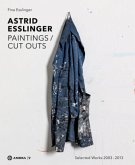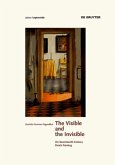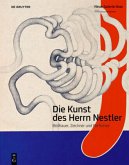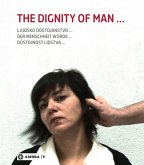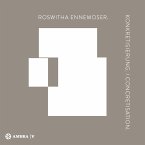the "Body – Concept - [De] Construction exhibition catalog continues the MUSA’s journey through the history of its Austrian contemporary art collection, which was founded in 1951. The Cultural Affairs Section of the City of Vienna acquired around 2,300 works of art and mosaics between 1970 and 1979. Sculptures and playground attractions were built in Vienna as part of the "Kunst am Bau” "Art and Construction” initiative. The period between 1970 and 1979 led to far-reaching social change in Austria, the themes and positions of which were reflected in the currents that influenced the contemporary art of the time. The effects of the Wirklichkeiten (Realities) exhibition held at the Viennese Secession in 1968 were still being felt at the beginning of the new decade. However, these were quickly superseded by abstract geometrical and conceptual currents. The influence of actionism also faded, whereas art with a feminist orientation gradually took center stage in the public’s interest. A striking number of artists used photography and video for their work, which also showed a performative dimension. "New media” successfully emerged in an artistic context during the 1970s. Towards the end of the decade, the art of figuration and ingenious gestures experiences a revival. The individual catalog contributions bring light to the development of the collection, the political culture and the cultural policies of Vuenna, as well as the photo-artistic tendencies and the status of women in the art of the 1970s.
mit dem Katalog zur gleichnamigen Ausstellung setzt das MUSA seinen Gang durch die Geschichte seiner 1951 gegründeten Sammlung für zeitgenössische österreichischer Kunst fort. Von 1970 bis 1979 erwarb die Kulturabteilung der Stadt Wien ca. 2.300 Kunstwerke, 240 Mosaike, Skulpturen und Spielplastiken wurden im Rahmen von "Kunst am Bau" in der Stadt realisiert. Die Zeit von 1970 bis 1979 brachte in Österreich tiefgreifende gesellschaftliche Veränderungen, deren Themen und Haltungen sich in den zeitgenössischen Kunstströmungen widerspiegeln. Am Beginn des Jahrzehnts sind noch die Auswirkungen der Ausstellung "Wirklichkeiten", die 1968 in der Wiener Secession stattfand, zu bemerken, die jedoch rasch von abstrakt geometrischen und konzeptuellen Strömungen überlagert werden. Auch der Aktionismus verliert an Einfluss, während eine feministisch orientierte Kunst verstärkt ins Zentrum des Interesses rückt. Auffällig viele Künstlerinnen setzen Fotografie und Video für ihre teils performativen Arbeiten ein. Den "Neuen Medien" gelingt in den 1970er Jahren der Durchbruch im Kunstkontext. Gegen Ende des Dezenniums erlebt die Figuration und der genialische Gestus mit den "Neuen Wilden" ein Revival. Die einzelnen Katalogbeiträge beleuchten die Entwicklung der Sammlung, politische Kultur und Kulturpolitik in Wien, fotokünstlerische Tendenzen, die Stellung von Frauen in der Kunst dieses Jahrzehnts, das Aufkommen neuer Medien sowie Literatur und Musik.
Hinweis: Dieser Artikel kann nur an eine deutsche Lieferadresse ausgeliefert werden.
mit dem Katalog zur gleichnamigen Ausstellung setzt das MUSA seinen Gang durch die Geschichte seiner 1951 gegründeten Sammlung für zeitgenössische österreichischer Kunst fort. Von 1970 bis 1979 erwarb die Kulturabteilung der Stadt Wien ca. 2.300 Kunstwerke, 240 Mosaike, Skulpturen und Spielplastiken wurden im Rahmen von "Kunst am Bau" in der Stadt realisiert. Die Zeit von 1970 bis 1979 brachte in Österreich tiefgreifende gesellschaftliche Veränderungen, deren Themen und Haltungen sich in den zeitgenössischen Kunstströmungen widerspiegeln. Am Beginn des Jahrzehnts sind noch die Auswirkungen der Ausstellung "Wirklichkeiten", die 1968 in der Wiener Secession stattfand, zu bemerken, die jedoch rasch von abstrakt geometrischen und konzeptuellen Strömungen überlagert werden. Auch der Aktionismus verliert an Einfluss, während eine feministisch orientierte Kunst verstärkt ins Zentrum des Interesses rückt. Auffällig viele Künstlerinnen setzen Fotografie und Video für ihre teils performativen Arbeiten ein. Den "Neuen Medien" gelingt in den 1970er Jahren der Durchbruch im Kunstkontext. Gegen Ende des Dezenniums erlebt die Figuration und der genialische Gestus mit den "Neuen Wilden" ein Revival. Die einzelnen Katalogbeiträge beleuchten die Entwicklung der Sammlung, politische Kultur und Kulturpolitik in Wien, fotokünstlerische Tendenzen, die Stellung von Frauen in der Kunst dieses Jahrzehnts, das Aufkommen neuer Medien sowie Literatur und Musik.
Hinweis: Dieser Artikel kann nur an eine deutsche Lieferadresse ausgeliefert werden.


